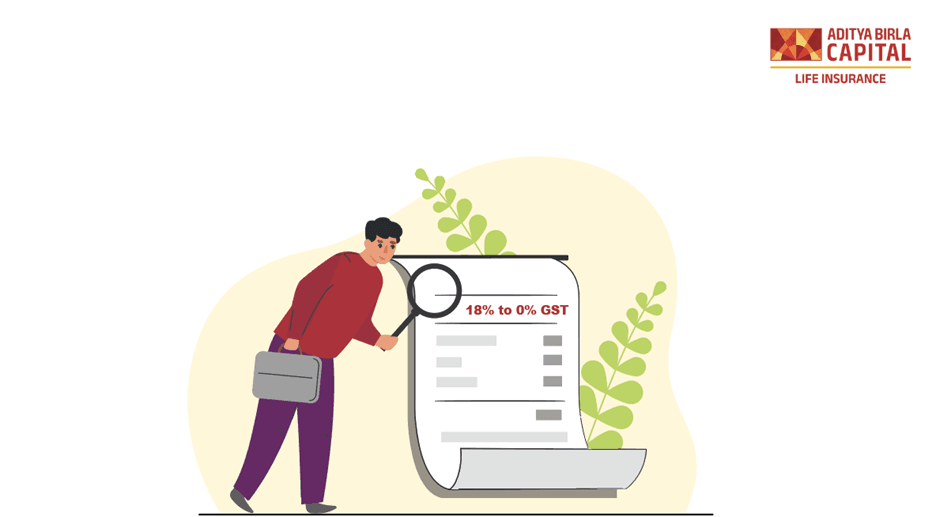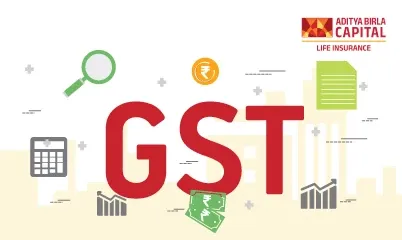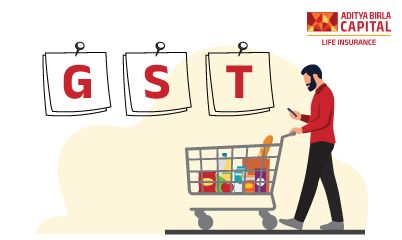For years, every Indian who purchased an insurance policy, whether for life, health, or savings, quietly paid something extra. It wasn’t part of their cover, nor did it increase their benefits. It was 18% GST, added to every premium.
Most of us accepted it as unavoidable, another tax in a long list of daily expenses. But in September 2025, that changed forever.
In a historic decision, the GST Council announced the complete removal of GST on all life and health insurance premiums, bringing the tax rate down from 18% to 0%.
This reform has far-reaching consequences, it makes insurance more affordable, simplifies financial planning, and brings millions of new families within the umbrella of protection.
Let’s unpack what this change means, why it was introduced, and how it transforms India’s insurance landscape.
A Look Back: Insurance and the 18% GST Era
When GST was first introduced in 2017, it replaced multiple indirect taxes with a single national framework. However, essential financial products like insurance were included in the 18% tax slab.
That meant:
- Term insurance premiums were fully taxed at 18%.
- Health insurance policies also carried 18% GST.
- Even savings-based life insurance and riders (like critical illness covers) were partially taxed.
For example:
- A ₹10,000 premium became ₹11,800.
- A ₹25,000 premium became ₹29,500.
- A ₹40,000 savings plan premium became ₹47,200.
Over time, this added cost made protection feel less affordable, especially for middle-income families.
The Turning Point: 22 September 2025
At the 56th GST Council Meeting, held in New Delhi in September 2025, the government made a landmark announcement, insurance premiums will no longer attract GST.
From 22 September 2025, the new tax rate on life and health insurance became 0%.
In other words:
Every rupee you pay toward your premium now goes directly into protecting your family, not into taxes.
This simple yet powerful shift has redefined the affordability and accessibility of insurance in India.
Why the 18% to 0% GST Change Was Needed
The reform wasn’t just about tax savings. It was about realigning the country’s financial system with the goal of inclusive protection.
Here’s why the change was both necessary and timely:
1. Low Insurance Penetration
Despite economic growth, India’s insurance penetration remains low, around 4% for life insurance and 1% for health insurance. The 18% GST acted as a barrier, discouraging first-time buyers.
2. Rising Medical and Living Costs
Healthcare inflation in India is among the highest globally. Families already struggling with high hospital bills and living costs found it hard to justify additional taxes on health protection.
3. Post-Pandemic Financial Awareness
The COVID-19 pandemic underscored the importance of insurance but also highlighted affordability challenges. The 2025 reform directly addresses this gap.
4. Vision of ‘Insurance for All by 2047’
The IRDAI and the government share a long-term vision of ensuring every household has life and health coverage by 2047. Tax-free insurance is a crucial step toward achieving this.
How the 18% to 0% GST Change Works
| Before Reform | After Reform |
|---|
| 18% GST on all life and health insurance premiums | 0% GST (full exemption) |
| ₹10,000 premium = ₹11,800 payable | ₹10,000 premium = ₹10,000 payable |
| Different GST rates for life, health, and riders | Uniform 0% across all categories |
| Complicated invoices | Transparent, single-amount billing |
| Higher overall cost | 18% lower premiums instantly |
The result? Instant savings and simpler pricing for both new and existing policyholders.
Impact on Life Insurance Policies
The 18% to 0% GST change has dramatically improved the value proposition of life
insurance.
1. Term Plans Become More Affordable
Term insurance is pure protection, and earlier, it carried full 18% GST on the entire premium. With that tax gone, the same ₹1 crore policy now costs up to ₹2,000 less per year.
2. Endowment and ULIP Plans Offer Better Returns
For savings or investment-linked plans, more of your premium now contributes directly to your corpus or guaranteed# benefits. Over time, this improves the maturity value.
3. Riders Cost Less
Add-ons like critical illness or accidental death riders are also GST-free, encouraging customers to build comprehensive protection.
4. Easier Renewals and Upgrades
Policy renewals are cheaper, reducing the likelihood of lapses. Many policyholders are now choosing to increase their coverage amounts without stretching their budgets.
Impact on Health Insurance Policies
The change is equally transformative for health insurance, especially for families and senior citizens.
1. Reduced Premiums
A family floater that earlier cost ₹35,400 (including tax) now costs ₹30,000, a straight ₹5,400 saved annually.
2. More Families Can Afford Coverage
Lower premiums mean wider participation, especially from lower-income and rural households.
3. Senior Citizen Relief
Older policyholders often pay higher premiums. The GST removal gives them immediate financial respite while maintaining their existing coverage levels.
4. Improved Continuity
More affordable renewals ensure families continue their policies year after year, rather than dropping coverage due to rising costs.
How Much Can You Save?
Here’s a simplified illustration of the annual savings the reform offers:
| Type of Policy | Old Annual Premium (with 18% GST) | New Premium (0% GST) | Annual Savings |
|---|
| Term Insurance | ₹11,800 | ₹10,000 | ₹1,800 |
| Health Insurance (Family Floater) | ₹35,400 | ₹30,000 | ₹5,400 |
| Endowment Plan | ₹47,200 | ₹40,000 | ₹7,200 |
Now imagine these savings compounded over 20 years. For many families, that’s thousands, even lakhs, of rupees saved, simply because of the GST reform.
Who Benefits Most from the Change
1. Middle-Class and Working Families
For those managing household budgets tightly, this change frees up funds that can be used for education, investments, or emergencies.
2. Young Professionals
First-time insurance buyers can now start early with lighter premiums, locking in lower rates for decades.
3. Senior Citizens
Older individuals see immediate relief, particularly on high-value health plans that previously attracted steep GST charges.
4. Small Businesses and Employers
Companies offering group insurance to employees can now provide coverage at a lower cost, promoting employee well-being.
Broader Benefits for the Economy
The 18% to 0% GST change isn’t just a consumer benefit, it strengthens India’s financial system as a whole.
1. Higher Insurance Penetration: More affordable products mean more policyholders, expanding the industry’s base.
2. Better Risk Distribution: A larger insured population stabilises claim ratios and strengthens insurers’ balance sheets.
3. Increased Domestic Savings: Families can redirect the savings from lower premiums toward investments.
4. Economic Stability: With fewer uninsured citizens, financial shocks from medical or life emergencies reduce.
5. Boost to Employment: As insurers grow, more advisors and financial professionals find career opportunities.
What It Means for the Insurance Industry
For insurers, this reform opens doors to innovation, inclusion, and digital transformation.
1. Simplified Product Pricing
With GST removed, insurers can offer clear, transparent premiums that are easier for customers to understand.
2. Increased Sales Volumes
Analysts predict a 15 - 20% jump in policy sales within the first year of implementation.
3. Better Customer Retention
Affordable renewals lead to fewer policy lapses, strengthening long-term relationships with customers.
4. Room for Product Innovation
Lower cost structures allow insurers to design hybrid products that combine protection, savings, and wellness.
The Emotional Side of the Reform
Money saved is important, but peace of mind is priceless.
For many Indian families, this change removes the guilt or hesitation that often came with buying protection.
- It means not having to choose between EMIs and life cover.
- It means safeguarding your health without worrying about affordability.
- It means protecting your loved ones without feeling overburdened.
By removing GST, the government has made insurance emotionally easier to say yes to.
From Complexity to Clarity
Before the reform, insurance buyers often struggled to understand their invoices:
- “Why is my premium higher than the quoted price?”
- “How much of this goes to tax?”
- “Will my maturity amount be affected by GST?”
Now, every policy document and renewal notice shows a single, clear number, your premium.
No tax breakdown, no confusion, no extra cost. This transparency builds greater trust
between insurers and customers.
A Catalyst for Financial Inclusion
This reform is more than a tax adjustment, it’s a financial inclusion policy in disguise.
By eliminating tax barriers, it invites millions of first-time buyers, especially from rural and semi-urban India, to join the formal financial system.
It complements other government programs like:
- Ayushman Bharat (for healthcare protection)
- Jan Suraksha Schemes (for low-cost insurance access)
- National Pension System (NPS) (for retirement planning)
Together, these initiatives are building a safety net that protects citizens across every stage of life.
How to Make the Most of This Change
If you’re a policyholder or a new buyer, here’s how to take advantage of the 0% GST era:
1. Check Renewal Dates: Ensure your next payment reflects the GST-free premium.
2. Upgrade Coverage: Use the savings to increase your sum assured.
3. Add Riders: Critical illness, accidental benefit, or waiver of premium riders are now cheaper.
4. Start Early: Younger buyers benefit the most from long-term, low-cost protection.
5. Educate Family Members: Encourage parents, siblings, and friends to buy insurance now that it’s more affordable.
India’s Path to Universal Protection
The GST reform brings India closer to its vision of Insurance for All by 2047. By removing tax burdens:
- It promotes financial inclusion.
- It encourages responsible savings.
- It reduces household financial vulnerability.
In the coming years, this decision is expected to drive double-digit growth in policy adoption, create millions of new customers, and reshape the industry into one that’s truly built for the people.
Final Thoughts
The 18% to 0% GST change on insurance is more than just a tax cut, it’s a financial revolution.
For individuals, it means affordability.
For families, it means peace of mind.
For insurers, it means growth.
And for India, it means progress toward a more secure and financially stable nation.
By turning insurance into a zero-tax essential, the government has ensured that protection is no longer a privilege reserved for the few, it’s a right available to all.
If you’ve been waiting to start your protection journey, this is your moment.
Because now, your premiums go exactly where they should, toward protecting your future, not paying for taxes.










